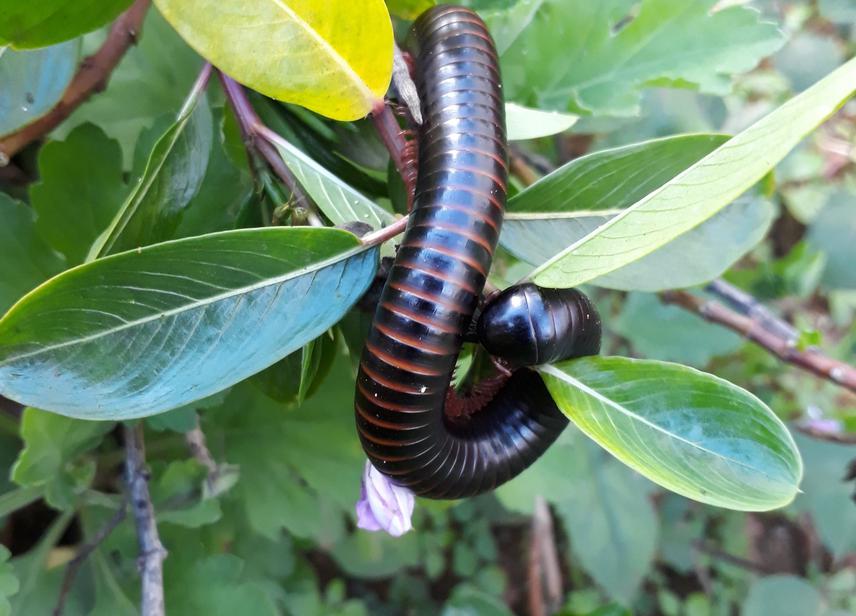Tawanda Tinago
To incorporate genetic data into conservation assessments for Doratogonus and provide information that will guide the development of monitoring strategies and prioritization of conservation efforts for Doratogonus species.

Millipedes contribute to ecosystem processes such as decomposition and nutrient cycling. Despite their contribution to ecosystem processes, millipedes like many other Southern African soil macro invertebrates, are often overlooked in conservation planning due to lack of accurate or incomplete species richness, distribution and diversity data (Hamer & Slotow 2002). Traditional morphological taxonomy often underestimates millipede species richness which in turn results in incomplete and/or inaccurate species distribution data. Accurate species richness and distribution data are imperative for conservation research and planning for non-volant, ecologically important macro-invertebrates such as millipedes.
According Hamer (2000) Doratogonus consists of 39 described species with 34 of the species occurring in southern Africa. Due to the close morphological resemblance of genitalia between some species, the current species hypotheses may not reflect the true species richness of Doratogonus. Protection of biodiversity requires accurate taxonomic data which includes species richness and distribution data. Therefore, it is critical to conduct taxonomic reassessments in order to identify cryptic taxa and establish the true species diversity of taxa especially those vulnerable to extinction.
The project aims to use genetic data to give an accurate inventory of Doratogonus species. Given that 14 Doratogonus species are listed under IUCN (2007) as vulnerable to critically endangered an inventory will provide more accurate species richness, genetic diversity and distribution data. Such data will guide the development of monitoring strategies and prioritization of conservation efforts for Doratogonus species.
In addition genetic data will provide insights into the viability (e.g. levels of inbreeding, effective population size) and extinction risks of the threatened Doratogonus populations. Furthermore, genetic data will also help identify appropriate taxonomic units and distinct populations within Doratogonus thereby ensuring the long term survival of Doratogonus species by maximizing their evolutionary potential and thereby minimizing their extinction risks.
The genetic data generated from this project will also enable long term genetic monitoring of the Doratogonus populations. Genetic monitoring will also allow estimation of population sizes through DNA based population census size (Nc) aimed at augmenting traditional methods of estimating Doratogonus population sizes. Population census size (Nc) will provide quantifiable population size estimates which can be used for comparison and to establish trends over time. Comparing the estimated population sizes of Doratogonus populations over time will also give an indication of the trends in population fluctuations.